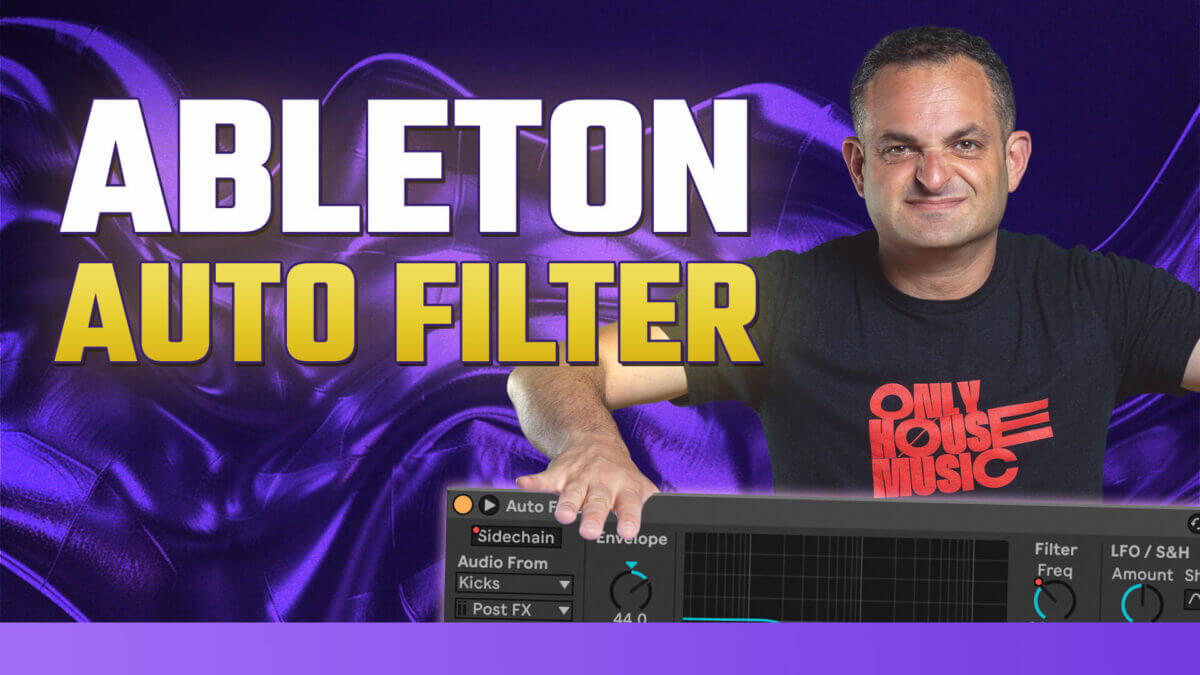
Ableton Auto Filter Tutorial: Master Filtering & Sound Design
The Ableton Auto Filter is a versatile tool that goes beyond simple EQ moves. Whether you’re looking to clean up a mix, add dynamic movement, or dive into advanced sound design techniques, this plugin can be a game-changer. In this tutorial, I’ll break down how the Auto Filter works, show you creative ways to use it, and give you some advanced tips to take your productions to the next level. Plus, members can access exclusive content for a deeper dive into Auto Filter techniques.
Ableton Auto Filter Overview
The Ableton Auto Filter is a powerful filtering plugin that can shape your sound dynamically. At its core, it allows you to cut or boost specific frequencies using different filter types:
Low-Pass Filter – Great for rolling off high frequencies and creating smooth transitions.
High-Pass Filter – Removes low-end rumble and adds clarity.
Band-Pass & Notch Filters – Useful for creative effects and surgical frequency control.
Morphing & Envelope Follower – Adds movement to your sound based on input dynamics.
LFO Modulation – Automates the filter movement for rhythmic effects.
By understanding these filter types and their applications, you can make the Auto Filter an essential part of your production workflow.
Examples of Using the Ableton Auto Filter
In this section, I demonstrate practical ways to use the Auto Filter in real-world scenarios:
Basic Filtering Moves – Cleaning up frequencies in a mix.
Adding Warmth & Depth – Using subtle filtering to shape tonal balance.
Creating Transitions – Automating the filter for smooth buildups and drops.
Adding Groove to Loops – Modulating the filter to create movement in drum loops and basslines.
These techniques can help you add texture and dynamics to your mixes while keeping sounds clean and polished.
Advanced Ways to Use Ableton Auto Filter
If you want to take things further, here are some advanced sound design techniques with the Auto Filter:
Resonant Sweeps – Enhancing filter resonance for futuristic or spacey effects.
Sidechain-Triggered Filtering – Using the envelope follower to dynamically shape the filter based on another sound (e.g., ducking the highs when a kick hits).
LFO Sync for Rhythmic Movement – Creating pulsating or wobbling effects by syncing the LFO to your track’s tempo.
Creative Distortion & Filtering – Pairing the Auto Filter with Ableton’s Saturator or Overdrive for gritty textures.
These techniques make the Auto Filter a powerful tool for both mixing and sound design.
The Ableton Auto Filter is more than just a basic filter — it’s a dynamic tool that can transform your tracks in creative and unexpected ways. Whether you’re using it for subtle EQ moves or extreme modulation, mastering the Auto Filter will elevate your music production.
If you want even more in-depth techniques, check out my members-only video, where I explore additional tricks and creative applications for this plugin.
